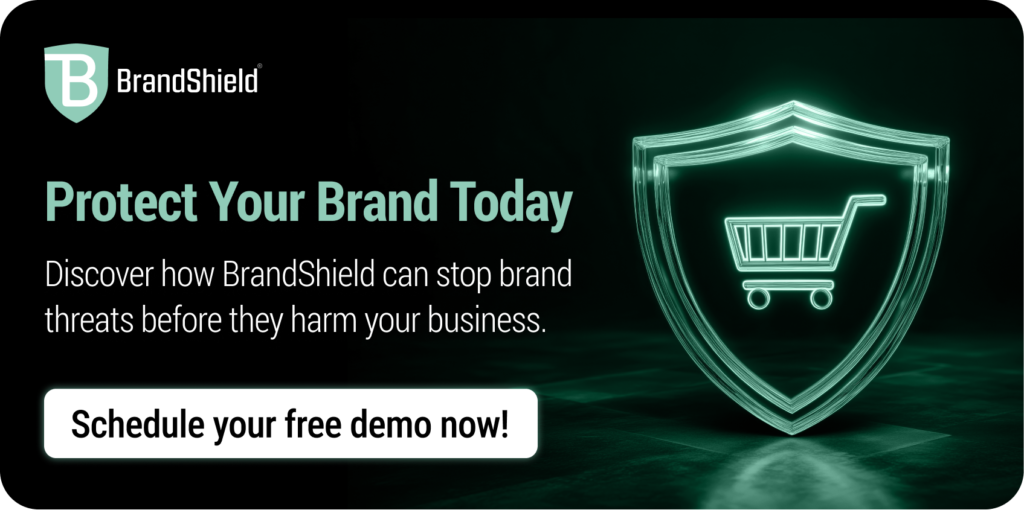10 Best Practices for Online Brand Protection: A Comprehensive Guide
Picture this: A customer searches for your premium product online, finds what appears to be your official store, makes a purchase, and receives a counterfeit item. The damage? Not just a lost sale, but a potentially permanent dent in your brand’s reputation. In an era where digital impersonation and brand fraud have become increasingly sophisticated, protecting your brand online isn’t just important—it’s imperative for survival.
Every 90 seconds, a business falls victim to brand abuse online. Whether it’s counterfeit products flooding marketplaces or sophisticated phishing schemes targeting your customers, the threats to your brand’s digital integrity are multiplying. Leading solutions like BrandShield have emerged to help companies combat these evolving threats. This comprehensive guide explores ten essential best practices that will help secure your brand’s digital presence.
1. Establish a Strong Trademark Portfolio
First and foremost, securing your intellectual property rights forms the foundation of effective online brand protection. Register your trademarks in all relevant jurisdictions where you conduct business. Additionally, consider registering variations of your brand name, logo, and key product names to prevent cybersquatting and trademark infringement. Modern online brand protection platforms like BrandShield can help monitor and enforce these trademark rights across digital channels.
2. Implement Comprehensive Domain Management
Furthermore, proactive domain management is essential for brand protection. Beyond securing your primary domain, register common variations and potential misspellings. Moreover, consider acquiring domains across different top-level domains (TLDs) relevant to your markets. BrandShield’s domain monitoring system can automatically detect unauthorized registrations and typosquatting attempts that could harm your brand.
3. Monitor Social Media Presence
In addition to domain management, maintaining vigilant social media monitoring is crucial. BrandShield’s AI-powered technology can scan major platforms for unauthorized brand usage, counterfeit products, and impersonator accounts. Consequently, establish a swift takedown process for fraudulent profiles and content. Most importantly, maintain active official accounts across all relevant platforms to strengthen your authentic brand presence.
4. Deploy Advanced Brand Monitoring Tools
Similarly, leveraging sophisticated brand monitoring tools can significantly enhance your protection efforts. BrandShield’s comprehensive platform combines advanced algorithms with human expertise to track online marketplace listings, website content, and social media mentions in real-time. As a result, you can quickly identify and address potential threats to your brand integrity through their automated enforcement capabilities.
5. Establish a Strong Anti-Counterfeiting Strategy
Meanwhile, developing a robust anti-counterfeiting strategy is vital for protecting your brand’s value. This includes implementing product authentication methods, such as QR codes or holographic labels. BrandShield’s marketplace monitoring features can identify counterfeit listings across hundreds of e-commerce platforms, helping brands maintain control over their distribution channels. Subsequently, educate your customers about how to identify genuine products and report suspicious listings.
6. Protect Your Digital Content
Moreover, safeguarding your digital content requires implementing strong Digital Rights Management (DRM) systems. This includes protecting images, videos, and marketing materials from unauthorized use. Therefore, use watermarks, metadata, and copyright notices to assert ownership of your digital assets. BrandShield’s content protection tools can help identify and remove unauthorized uses of your digital content across the web.
7. Build a Rapid Response Protocol
Additionally, creating an efficient incident response plan is essential for managing brand threats. BrandShield’s platform streamlines this process with:
- Automated threat detection and verification
- Comprehensive violation documentation
- Integrated takedown procedures
- Legal documentation support
- Stakeholder reporting capabilities
8. Engage in Online Brand Enforcement
Furthermore, consistent enforcement of your brand rights is crucial for long-term protection. BrandShield’s enforcement automation can conduct marketplace sweeps to identify unauthorized sellers and counterfeit products. Subsequently, their established relationships with major e-commerce platforms help expedite takedown requests and enforce your rights effectively.
9. Invest in Cybersecurity Measures
In addition to brand protection, implementing robust cybersecurity measures safeguards your digital assets. This includes:
- Regular security audits
- Strong password policies
- Multi-factor authentication
- Employee training programs
- Data encryption protocols
BrandShield’s phishing detection and prevention capabilities add an extra layer of security to your brand protection strategy.
10. Maintain Customer Communication Channels
Finally, establishing clear communication channels with customers helps identify and address brand protection issues quickly. BrandShield’s reporting tools can help aggregate and analyze customer feedback about potential brand violations, making it easier to identify and address emerging threats.
Conclusion
Above all, effective online brand protection requires a multi-faceted approach combining legal, technical, and operational measures. Modern solutions like BrandShield provide comprehensive protection by integrating advanced technology with expert services to safeguard brands in the digital age.
Remember that brand protection is not a one-time effort but rather an ongoing process that requires regular monitoring and updating. As new threats emerge and technology evolves, your brand protection strategy should adapt accordingly, and platforms like BrandShield continuously update their capabilities to address these emerging challenges.
To ensure long-term success, regularly review and update your brand protection measures, stay informed about emerging threats, and maintain strong relationships with key stakeholders in your brand protection ecosystem. Through these comprehensive efforts, supported by advanced solutions like BrandShield, you can build a resilient brand that thrives in the digital marketplace while maintaining its integrity and value.


